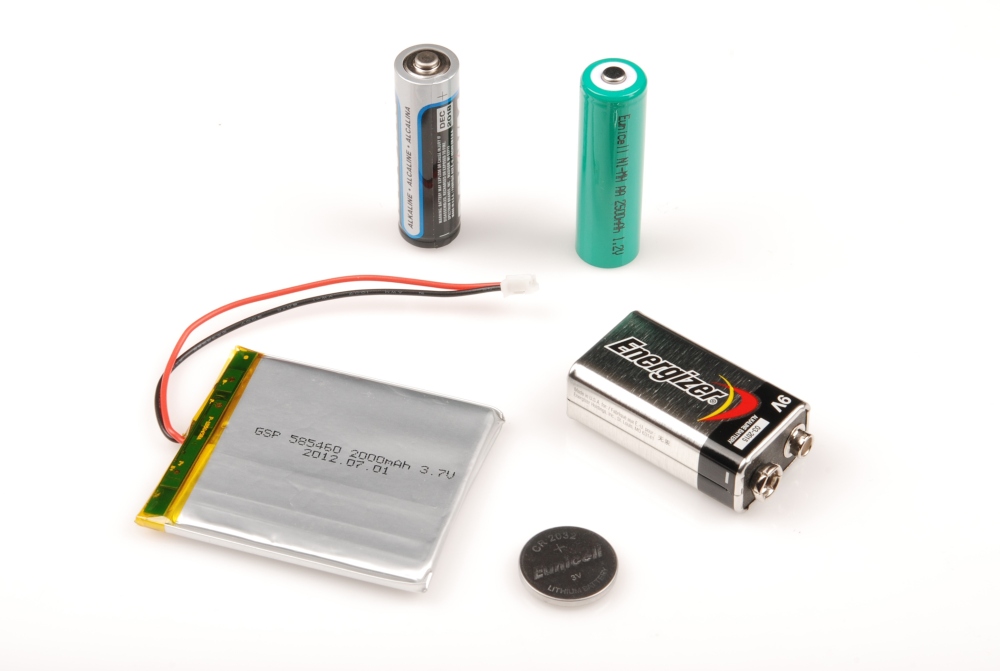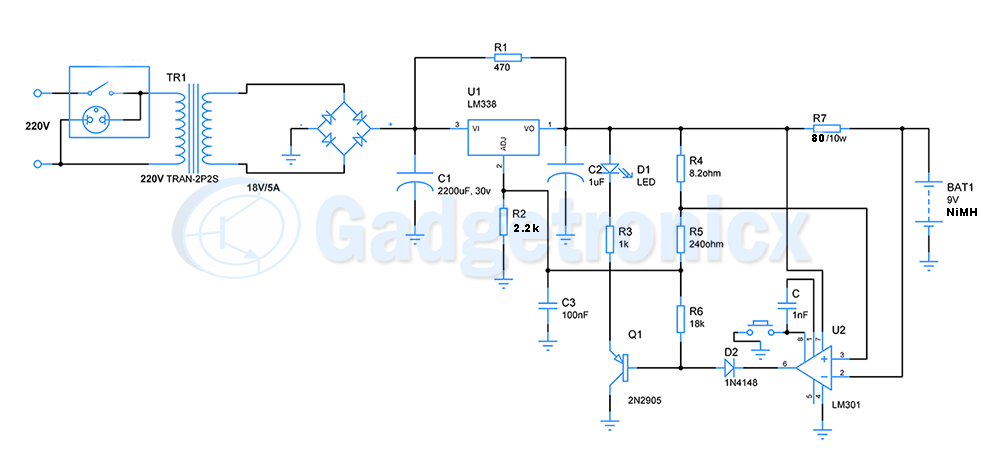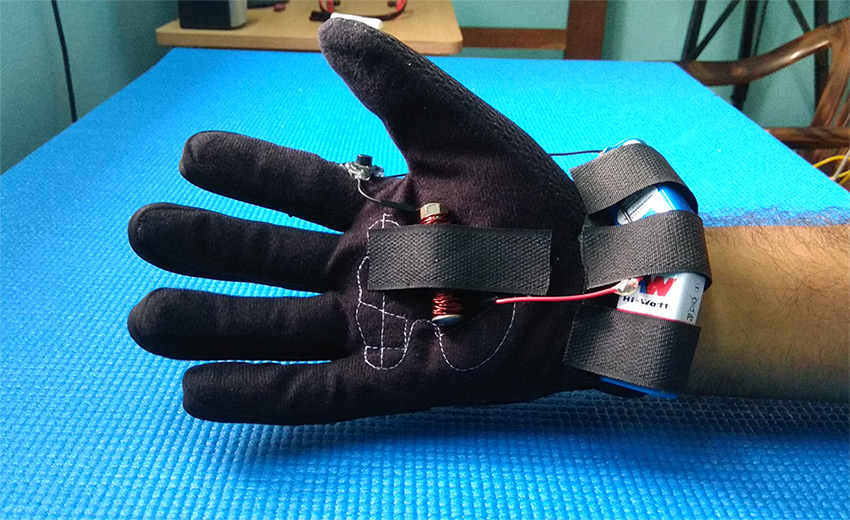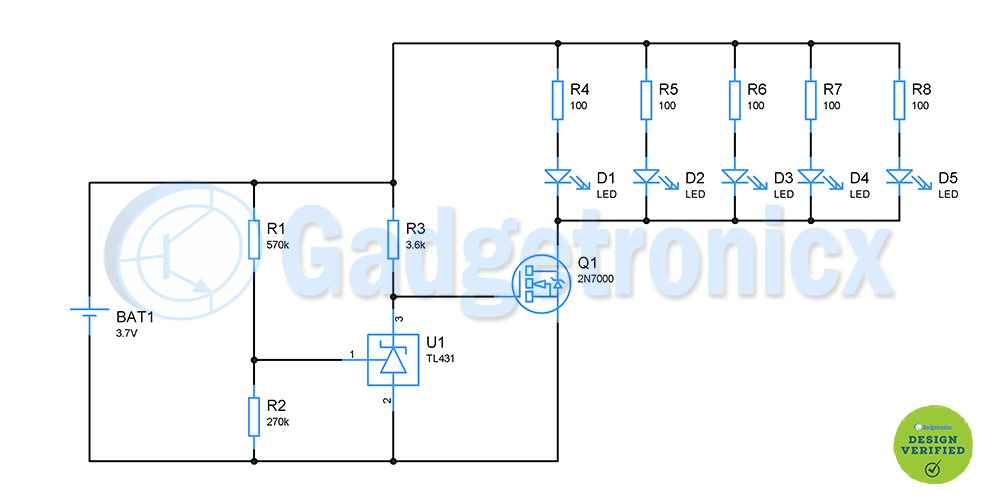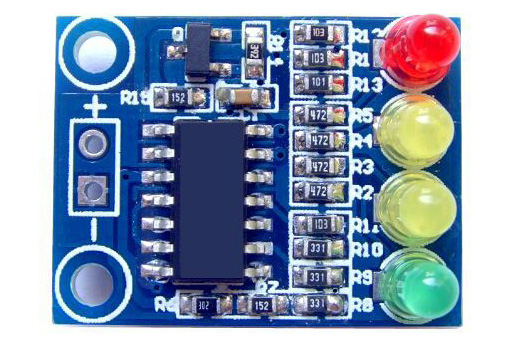Rechargeable batteries have been everywhere now a days with the development in technology these types of batteries are getting more powerful and compact. This article is focused to bring out the most commonly used Rechargeable batteries in the market and the difference between them. We are not gonna dive deeper into their chemistry or sorts but rather their important characteristics, how different they are from each other and most suitable application for each battery types. This article will help you to pick the battery that suits to power your future projects.
Before moving on to the types of project, I would like to explain key terms that can help you to understand the explanation better.
CHARGE DENSITY:
This term refers to the amount of power that a battery can deliver in reference to weight of the battery. This is represented in terms of Wh / Kg. So batteries with high charge density tend to deliver more power while weighing less however lower charge density tend to deliver less power while weighing more.
CHARGE/ DISCHARGE CYCLES:
Battery capacities tend to deteriorate with it’s usage. This Charge / Discharge cycles indicate the number of times it can be charged and discharged before loosing its capacity completely. Batteries with high cycle times tend to have a long lifetime.
CELL VOLTAGE:
This is the nominal voltage of individual cells that are connected in series in most of the batteries. The nominal cell voltage differs depends upon the type of chemistry used in the battery.
LOAD CURRENT:
Maximum current a battery can supply in reference to the total capacity of your battery. Some batteries are capable of providing high amount of current in short period of time while other batteries supply only low amount of current for a longer time period despite the battery capacity is high.
There are other terms that comes into picture when speaking of batteries however for the sake of simplicity I will ignore them here.
COMMON USED RECHARGEABLE BATTERIES:
Nickel Cadmium Battery:
This type of battery has low energy density of 45 – 80 ( Wh/Kg ) with a nominal cell voltage of 1.25v. It can provide high load current which will be greater than actual current rating of the battery and has greater cycle life of 1500 comparative to other familiar batteries used in the market. This battery is best know for its ruggedness and ability to work under unlikely conditions and temperature.
Applications: Power tools, Medical instrumentation, Motorized equipment and much more.
Nickel-Metal Hydride ( NiMh ) battery:
These type of batteries has high energy density 60-120 ( Wh/Kg ) with a nominal voltage of about 1.25v. The energy density of this battery is comparatively higher than that NiCad battery however it can only supply low current to the load in a short duration of time. This battery can withstand charge/ discharge cycle of about of 300 to 500 hence their lifetime is short. The battery cannot withstand unlikely conditions like NiCad batteries. But these batteries are very much environment friendly and highly recommended for being easy to recycle.
Applications: Portable electronics, Electric razors, camcorders and much more.
Lead Acid battery:
This is the battery with lowest energy density ( 30 – 50 Wh/Kg ) of all and therefore this battery tends to be heavy and does not fit for portable applications. The cell voltage of this battery is about 2V. Also the cycle of this battery is about 200 to 300 which is again low comparative to other rechargeable battery types. The maximum load current it can deliver is pretty much similar to NiMh battery. However this type of battery is easy to build and cost significantly less than over other rechargeable batteries.
Applications: UPS, Submarines, Lighting and much more.
Lithium ion battery:
This battery has the highest energy density of 110 – 160 Wh/Kg and hence it has high capacity while weighing less. It also has a high cycle time of 500 to 1000. Nominal single cell voltage is about 3.6v, so these type of batteries are used as an individual unit to power up. The peak current supplied is comparatively lower than the Nickel batteries. The cost of this type of battery is low and its light weight characteristics makes this a great choice for modern gadgets. But despite all this these type of batteries requires protection circuit to safely charge them.
Applications: Mobile phones, Laptop, Radio electronics.
Alkaline battery:
The energy density of this battery stands around 80 Wh/ Kg which is similar to that of NiCad batteries. The nominal cell voltage of this battery is around 1.5v. The cycle life is around 50 which is relatively less than other batteries and hence offers very less lifetime. It can supply only half of the rated current to its load. Despite all the cost of this battery is very less than other rechargeable batteries. This makes alkaline batteries quite famous for low power household applications.
Applications: Flash lights, Toys, clocks and much more.
Verdict:
| Battery type | Suited for |
| NIckel Cadmium ( NiCad ) | Projects that require high current, Fast recharge and long lifetime |
| Nickel Metal Hydride ( NiMh ) | Projects that require less weight, moderate current draw and average lifetime. |
| Lead acid | Projects where weight is not critical, less lifetime, moderate current draw and charge control is not an option |
| Lithium ion | Projects that require less weight, low current draw, extended lifetime and deploys charge control. |
| Alkaline | Projects that require low cost, less lifetime and low peak current |
I believe that the above table article will help you to choose the battery that fits your next project.
Hope this article was informative to you to understand the basic nature of commonly used rechargeable batteries. And weigh them based on their basic characteristics and choose a battery that fits your project or application. For more deeper understanding of these batteries I strongly recommend to read this article from Battery University. Happy making 🙂

